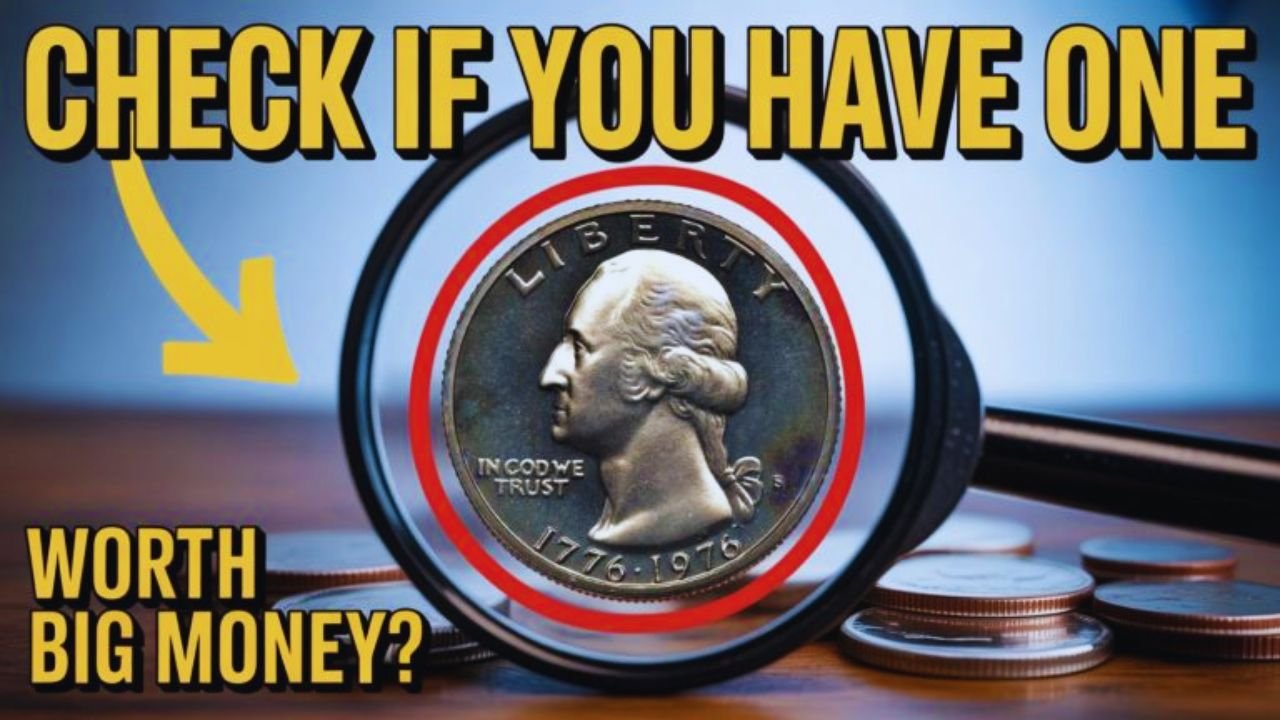In 1976, the United States celebrated its 200th birthday with great excitement, and the U.S. Mint joined in by releasing a special quarter known as the Bicentennial Quarter. This coin, with its unique design, was made to honor the signing of the Declaration of Independence. While millions of these quarters were minted, a few rare ones could be worth up to $2 million because of special features or mistakes made during production. For anyone with a jar of old coins or spare change, knowing how to spot these valuable quarters could lead to a life-changing discovery. Here’s a simple guide to help you find one of these rare treasures.
Understanding the Bicentennial Quarter
The 1976 Bicentennial Quarter stands out from regular quarters. It has a dual date, 1776-1976, on the front, showing George Washington’s face. The back features a colonial drummer and a torch circled by 13 stars, representing the original 13 colonies. Most of these coins were made with copper and nickel, but some from the San Francisco Mint were struck in 40% silver for collectors. Over 1.6 billion quarters were produced in Philadelphia and Denver, with smaller numbers in San Francisco, making some versions rarer than others.
What Makes Some Quarters So Valuable?
Certain Bicentennial Quarters are worth a fortune due to minting errors or special qualities. For example, a double die error, where the design is stamped twice slightly off-center, creates a blurry look on the date or lettering. Off-center strikes, where the design is not properly aligned, can also increase value. Another rare case is when a quarter is struck on the wrong planchet, like one meant for a dime. Silver quarters, especially those in perfect condition or with a mirror-like finish, are highly sought after. For instance, a silver-clad 1976-S quarter graded PR-70 sold for $19,200 at auction, and some error coins have reportedly reached values near $2 million.
| Error Type | Description |
|---|---|
| Double Die | Design stamped twice, causing a blurry effect |
| Off-Center Strike | Design misaligned, parts may be missing |
| Wrong Planchet | Quarter struck on a planchet meant for another coin |
How to Spot a Rare Quarter
To find a valuable 1976 Bicentennial Quarter, start by checking the mint mark. Look under George Washington’s neck for an “S,” which means it was made in San Francisco and might be silver. Weigh the coin: silver quarters weigh about 5.75 grams, while copper-nickel ones are around 5.67 grams. Use a magnifying glass to check for doubling on the date, “LIBERTY,” or “IN GOD WE TRUST.” Also, look at the edge; silver quarters have a solid silver look, while regular ones show a copper stripe. A shiny or darker tone can also hint at a silver coin.
| Feature | How to Check |
|---|---|
| Mint Mark | Look for “S” under Washington’s neck |
| Weight | Silver: ~5.75g, Copper-Nickel: ~5.67g |
| Edge | Silver has no copper stripe |
Tips for Verifying and Selling
If you think you’ve found a rare quarter, don’t clean it, as this can lower its value. Store it in a protective holder to avoid scratches. Have it checked by a professional grading service like PCGS or NGC to confirm its condition and authenticity. Coins in near-perfect condition, graded MS-68 or higher, are worth the most. If it’s valuable, you can sell it through auction houses, coin dealers, or platforms like eBay, but grading it first is key to getting a fair price.
Keep Checking Your Change
Finding a $2 million Bicentennial Quarter is rare, but it’s worth looking through your spare change, old coin jars, or family collections. With millions still in circulation, you might stumble across a valuable error coin or silver quarter. As the U.S. approaches its 250th anniversary in 2026, interest in these coins is growing, driving up their value. So, grab a magnifying glass, check your quarters, and you might just find a piece of American history worth a fortune.
